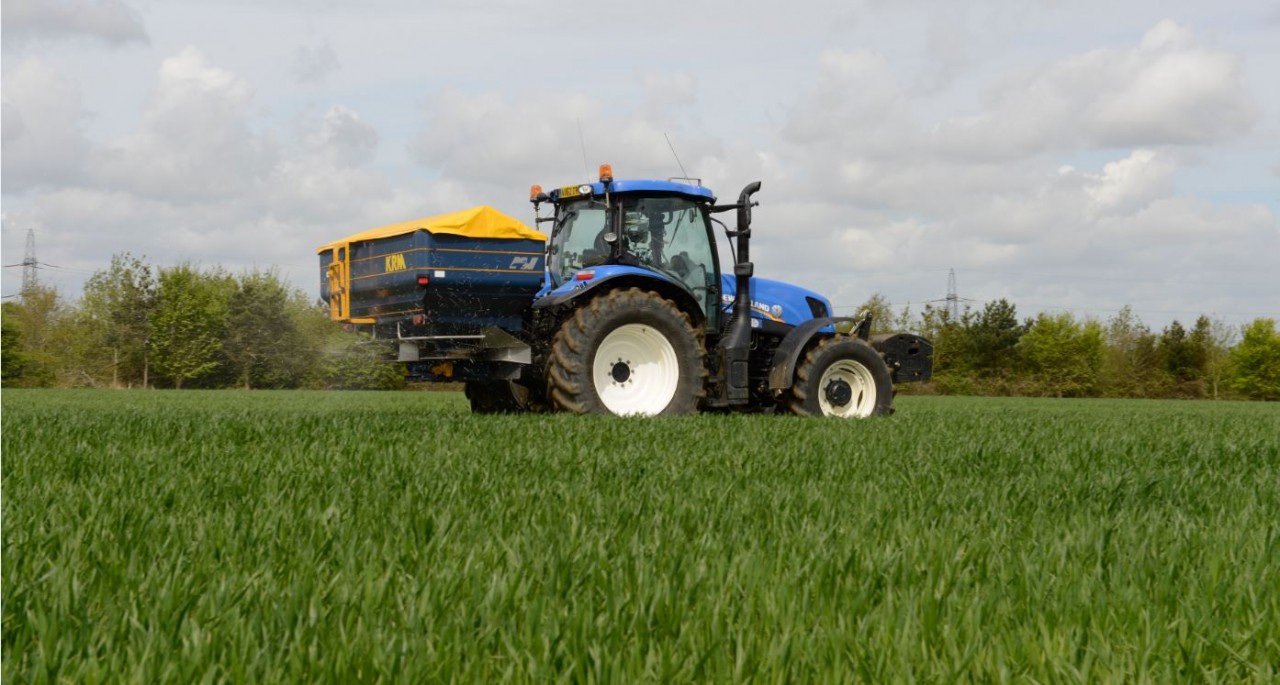P and K blog series: The building blocks of overall plant health
This is the first in our series of blogs looking at the importance of P and K applications. To read the rest of the series, please click the links below:
Two things we all know from our school biology lessons are that photosynthesis and osmosis are vital for healthy plants, but how are they related to phosphorus (P) and potassium (K)?
The importance of phosphorus
In a nutshell, plants need phosphorus for:
- Good early root growth
- Better establishment
- Energy production
- Improved yield.
Phosphorus is found in every living plant cell and plays a crucial role in virtually every plant process that involves energy transfer. It is an essential component of adenosine triphosphate (ATP), which is the source of energy that drives the multitude of chemical reactions within a plant.
The energy from photosynthesis is captured in ATP, which is then available as an energy source for the many other reactions that occur within the plant. The sugars are used as building blocks, helping to produce other cell structural and storage components. In other words, photosynthesis will not work properly without adequate P in a plant and, without photosynthesis, a plant cannot function fully.
The positive impact phosphorus has on stimulating root growth and early development in plants should also not be forgotten. Early plant and root development is obviously important for establishing a healthy crop but an extensive root system will be invaluable later in the season, giving better access to water and nutrients.
Potassium is vital too
We absolutely need it for healthy crops. Potash affects both yield and quality of grain, as well as the general health and vigour of a plant and it is needed in large amounts because it is the major regulator of solution concentrations. It controls cell sap content to maintain plant turgor and it supports the movement of all materials within the plant.
Put simply, we need potassium because it plays a major role in the regulation of water in plants (osmo-regulation). It impacts both the uptake of water (along with nutrients) through plant roots and its loss through the stomata.
How much P & K is needed?
So, we've established that phosphorus and potassium are vital for photosynthesis and water regulation – but how much of them do you need to guarantee healthy plants?
Fortunately, much research has been done on this over the decades. In fact, it's something that has been continuously explored for over 150 years at Rothamsted's Hertfordshire research farm, with a particular focus on the effect different levels of P and K have on plant growth and yields.
Because both P and K mainly access the plant through root hairs, the nutrients have to come from within the soil. In order to identify what can be deemed an 'ideal' amount for a crop, we measure the effect that different soil levels of P and K have on yield.
Trials clearly show that there is a threshold level. When below it, crops will suffer and lose yield and, when above, there is generally no yield improvement. In other words, continually increasing levels does not mean an increase in crop performance or output.
The diagram below identifies crop behaviour in relation to different P and K levels. The line plotted is known as a 'yield response curve' - it is a similar shape for both P and K.
Maintain optimum levels and make cost-effective applications
Precision technology can play an important role when it comes to successful nutrient management.
With P and K in particular, there is a considerable benefit to carrying out nutrient mapping and variable rate applications of fertiliser in that you are able to individually deal with field areas that are both below, at and above the critical level.
Targeting areas which require additional inputs will increase readily available soil nutrients and therefore show a yield increase. On the other hand, areas above critical levels will not need supplementing with additional nutrients from fertiliser to maintain the optimum yield. As a result, savings can be made by reducing unnecessary fertiliser applications.
When it comes to applying P and K, it is important to recognise that you are optimising the photosynthetic and water functions within a plant. Without the correct levels, this functionality will reduce and the yield potential will therefore be compromised.
Missing an application can cause you losses in the long-term
There are no two ways about it – plants absolutely need to photosynthesise and maintain sufficient water supplies in order to reach their optimum yields, and correct levels of P and K can ensure these take place.
Choosing to miss an application as a money-saving exercise is not likely to be cost-effective in the long run when you consider the potential drop in yield.
What about the role of P and K after this year's extreme weather?
We've certainly faced some substantial weather events this growing season and, with the impact of these extreme conditions still prevalent on farm, it's even more important to manage P and K levels for your crops.
In the next blog as part of this P and K series, National Crop Nutrition Technical Manager, Edward Downing, highlights the importance of assessing soil conditions, successfully managing nutrient availability and carrying out analysis, while our final blog explores how best to prepare for next year to ensure you get the most from your phosphorus and potassium applications.
As a subscriber, you’ll receive email alerts each time a new blog is published so you can always stay updated with the latest advice and insights from our experts








Comments